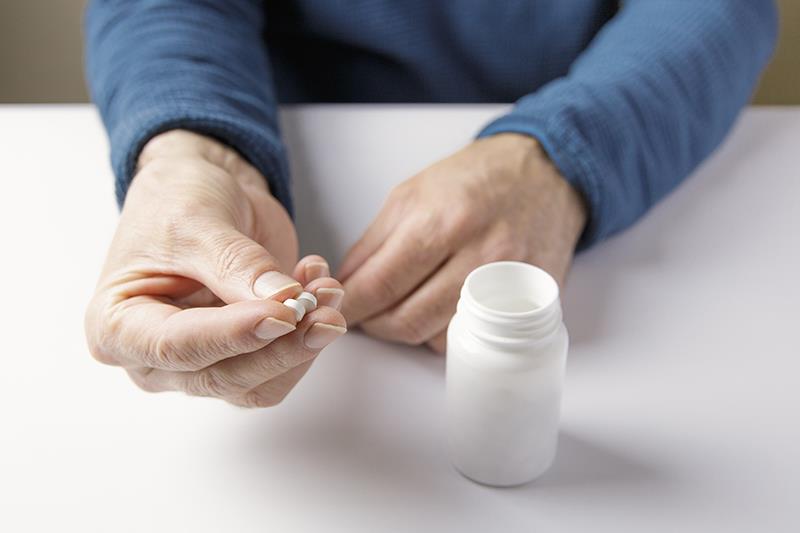SGLT-2 inhibitors lower autoimmune rheumatic disease risk in adults with T2D





The use of sodium-glucose cotransporter-2 (SGLT-2) inhibitors, compared with sulfonylureas, results in a reduced risk of autoimmune rheumatic disease among adults with type 2 diabetes (T2D), reports a recent study.
“This potential benefit, however, should be carefully weighed against known adverse events and concerns about tolerability,” the investigators said. “Replication in other populations and settings, as well as studies in patients with existing autoimmune rheumatic diseases, are warranted to confirm and extend these observations.”
This retrospective cohort study was conducted using the nationwide healthcare database in South Korea from 2012 to 2022. A total of 2,032,157 adults aged ≥18 years with T2D were identified. Of these, 552,065 initiated SGLT-2 inhibitors and 1,480,092 initiated sulfonylureas.
Autoimmune rheumatic disease, the primary outcome, was defined using a validated algorithm that incorporates diagnostic codes and registration in a disease-specific nationwide program. The investigators estimated hazard ratios (HRs) and rate differences (RDs) per 100,000 person-years after normalized inverse probability treatment weighting based on propensity score.
The weighted incidence rate per 100,000 person-years was 51.90 in the SGLT-2 group and 58.41 in the sulfonylureas group. [BMJ 2025;391:e085196]
Over a median follow-up of 9 months, the use of SGLT-2 inhibitors led to an 11-percent lower risk of incident autoimmune rheumatic diseases relative to sulfonylureas (HR, 0.89, 95 percent confidence interval [CI], 0.81‒0.98; RD, ‒6.50 per 100,000 person-years, 95 percent CI, ‒11.86 to ‒1.14).
These findings persisted in subgroups stratified by age, sex, type of SGLT-2 inhibitor, baseline cardiovascular disease, and obesity status. For the control outcomes, the HRs were 2.78 (95 percent CI, 2.72‒2.83) for genital infections and 1.03 (95 percent CI, 1.01‒1.05) for herpes zoster.
Immune activation
“Although the underlying mechanisms vary across different autoimmune rheumatic diseases, many of these conditions share features of abnormal immune activation, immune system dysregulation, and chronic inflammation, which are thought to play central roles in disease development and progression,” the investigators said. [Lancet 2013;382:819-831]
In clinical studies, SGLT-2 inhibitors showed immunomodulatory and anti-inflammatory potential. For instance, Hess and colleagues found that SGLT-2 inhibitor treatment reduced CD80+ macrophages while increasing CD163+ monocytes, suggesting a shift towards an anti-inflammatory state. [Cell Metab 2019;30:609-613]
Furthermore, a previous study showed SGLT-2 inhibitors preventing T cell proliferation and interleukin (IL)-17 production and improving ILI-10 levels, contributing to immune homoeostasis. [Hum Immunol 2021;82:422-428]
“These effects were accompanied by a reduction in proinflammatory cytokines, such as IL-6, tumour necrosis factor alpha, and IL-1beta, as well as lower levels of high sensitivity C-reactive protein and urinary monocyte MCP-1,” the investigators said. [Diabetes Obes Metab 2018;20:1988-1993; J Diabetes Res 2022;2022:6796470; BMC Endocr Disord 2022;22:37; Front Pharmacol 2021;12:777083]
“Furthermore, the marked metabolic benefits of SGLT-2 inhibitors, including improved glycaemic control, alleviation of ectopic fat deposition, insulin sensitizing effect, and better lipid profiles, may reduce systemic inflammation and thereby mitigate autoimmune activation indirectly,” they added. [Nat Rev Nephrol 2016;12:721-737; J Clin Invest 2014;124:509-514; J Clin Invest 2014;124:499-508]
“The results suggest that the anti-inflammatory and immunomodulatory effects of SGLT-2 inhibitors, as suggested in previous studies, are clinically significant,” the investigators said.